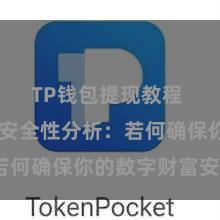TP钱包私钥 TP Wallet Developer Documentation: Comprehensive Guide for Building Secure and User-Friendly Wallets
With the increasing popularity of cryptocurrencies and the widespread adoption of blockchain technologyTP钱包私钥, the demand for secure and user-friendly wallets has never been higher. As a developer looking to build a wallet that meets the needs of today's savvy cryptocurrency users, you will need to have a comprehensive understanding of the key components and best practices for creating secure and user-friendly wallets.
In this TP Wallet Developer Documentation, we will provide a comprehensive guide to help you build a wallet that is not only secure but also easy to use. From generating private keys to implementing multi-factor authentication, this guide will cover all the essential aspects of wallet development.
1. Generating Private Keys: Private keys are the fundamental building blocks of a cryptocurrency wallet. They are used to sign transactions and prove ownership of coins. It is essential to generate private keys securely using a cryptographically secure random number generator. Avoid using predictable sources of randomness, such as timestamps or user inputs, as they can make your private keys vulnerable to theft.
2. Secure Storage: Once you have generated private keys, you need to store them securely. Avoid storing private keys in plaintext or on unencrypted devices, as this can make them easy targets for hackers. Consider using hardware wallets or encrypted storage solutions to safeguard your users' private keys.
3. Multi-Factor Authentication: Implementing multi-factor authentication can add an extra layer of security to your wallet. Require users to verify their identity using a combination of something they know (password), something they have (phone or hardware token), or something they are (biometric data). This can help prevent unauthorized access to your users' funds.
TP钱包使用教程4. Backup and Recovery: Losing access to private keys can result in the permanent loss of funds. Make sure to provide users with easy and secure methods for backing up and recovering their private keys. Consider implementing mnemonic phrases or seed backups that allow users to restore their wallets in case of loss or theft.
5. User-Friendly Interface: While security is paramount, user experience is also a crucial aspect of wallet development. Design an intuitive and user-friendly interface that makes it easy for users to send and receive funds, track their transactions, and manage their portfolios. Consider incorporating features such as QR code scanning, transaction history, and customizable settings to enhance the user experience.
6. Regular Audits: Regularly audit your wallet code to identify and patch security vulnerabilities. Consider partnering with security professionals or conducting independent audits to ensure that your wallet meets industry standards for security and privacy.
In conclusion, building a secure and user-friendly wallet requires a comprehensive understanding of key principles and best practices in wallet development. By following the guidelines outlined in this TP Wallet Developer Documentation, you can create a wallet that meets the needs of today's cryptocurrency users while safeguarding their funds against potential threats.
One of the key features of the Bither Wallet is its cold storage capabilities. Cold storage is a method of storing cryptocurrency offline, away from potential hackers and cyber threats. This provides users with an extra layer of security that is essential when dealing with digital assets. The Bither Wallet effectively safeguards your cryptocurrency, giving you peace of mind knowing that your funds are safe and secure.
One of the key features of Bither Wallet is its multi-signature functionality, which adds an extra layer of security to the wallet. With multi-signatureTP钱包私钥, users can set up multiple private keys, and a transaction can only be authorized when a predefined number of these keys are used. This feature makes it virtually impossible for hackers to access the user's funds without the necessary authorization.





